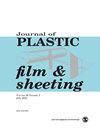随机化是否正确
IF 1.5
4区 材料科学
Q3 MATERIALS SCIENCE, COATINGS & FILMS
引用次数: 0
摘要
随机化对于计划实验(DOE)的成功至关重要,以保护因子效应免受潜伏变量的影响。例如,考虑表1中所示的8次运行、两级析因设计。它以标准(而不是随机)顺序列出每个因子的低()和高(+)编码级别。注意,在整个实验过程中,因子C只改变一次水平——首先在四次运行中设置为低(减)水平,然后在其余四次运行中设置为高(加)水平。现在,假设房间里的湿度全天都在增加,影响了测量的响应。由于DOE运行不是随机的,湿度的变化会影响非随机因素C的计算效果。因此,因素C的影响包括湿度的变化——它不再纯粹是由于从低到高的变化。这将导致分析问题!本文章由计算机程序翻译,如有差异,请以英文原文为准。
Randomization done right
Randomization is essential for success with planned experimentation (DOE) to protect factor effects against bias by lurking variables. For example, consider the 8-run, two-level factorial design shown in Table 1. It lays out the low ( ) and high (+) coded levels of each factor in standard, not random, order. Notice that factor C changes level only once throughout the experiment—first being set at the low (minus) level for four runs, followed by the remaining four runs set at the high (plus) level. Now, let’s say that the humidity in the room increases throughout the day—affecting the measured response. Since the DOE runs are not randomized, the change in humidity biases the calculated effect of the nonrandomized factor C. Therefore, the effect of factor C includes the humidity change – it is no longer purely due to the change from low to high. This will cause analysis problems!
求助全文
通过发布文献求助,成功后即可免费获取论文全文。
去求助
来源期刊

Journal of Plastic Film & Sheeting
工程技术-材料科学:膜
CiteScore
6.00
自引率
16.10%
发文量
33
审稿时长
>12 weeks
期刊介绍:
The Journal of Plastic Film and Sheeting improves communication concerning plastic film and sheeting with major emphasis on the propogation of knowledge which will serve to advance the science and technology of these products and thus better serve industry and the ultimate consumer. The journal reports on the wide variety of advances that are rapidly taking place in the technology of plastic film and sheeting. This journal is a member of the Committee on Publication Ethics (COPE).
 求助内容:
求助内容: 应助结果提醒方式:
应助结果提醒方式:


